The investigation into the crash in Tokyo between JAL Flight 516 and a Coast Guard turboprop is already leading to some procedural changes.
It has now been over a week since this tragic runway incursion in Tokyo, which claimed the lives of five members of the Japanese Coast Guard. This aircraft was reportedly about to fly its third mission toward the earthquake-hit Noto Peninsula. It isn’t clear if it had the same crew for all three flights.

The authorities in Japan have published a transcript of the communication between the Tokyo Haneda air traffic controllers and the two aircraft involved in the crash. This transcript suggests that the crew of the JAL Airbus A350 had received and acknowledged a clearance to land.
The surviving Coast Guard pilot told investigators that he had permission to enter the runway, something the transcript does not corroborate. This transcript indicates that the controller told the Coast Guard crew to taxi to holding point C5, which the flight crew read back.
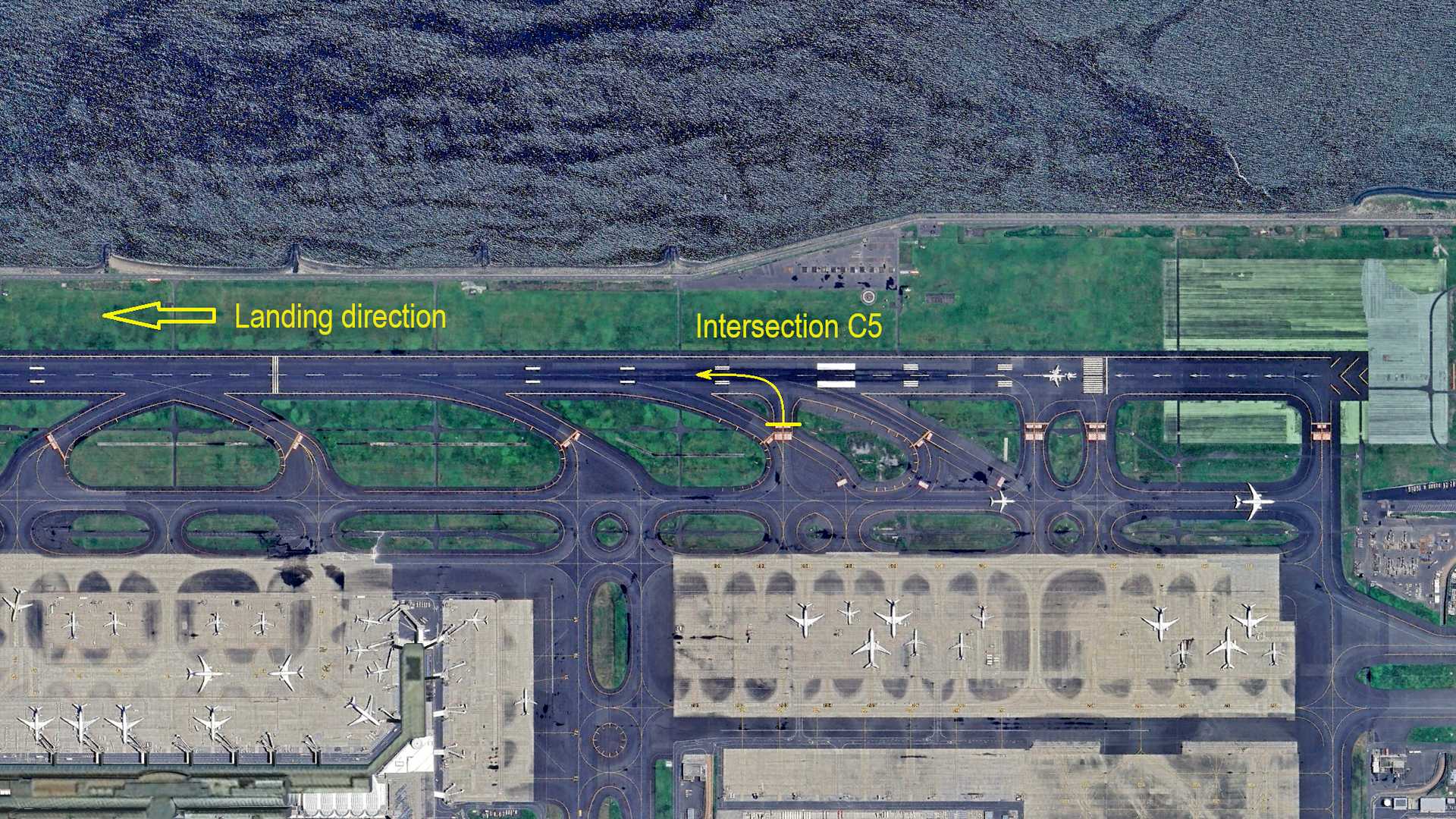
“No.1”?
The Tokyo controller also told the Coast Guard crew in this crash that they were “No.1”. This meant that they were to depart before other departing traffic. The Coast Guard aircraft was making an intersection departure from C5, while other aircraft were waiting to depart from the beginning of the runway, entering from holding point C1.
These sequencing calls, naming aircraft “No.1”, “No.2” etc for departure, are a focus in the Tokyo crash investigation. Japan’s Ministry of Transport reportedly announced that controllers won’t use this phraseology from now on.
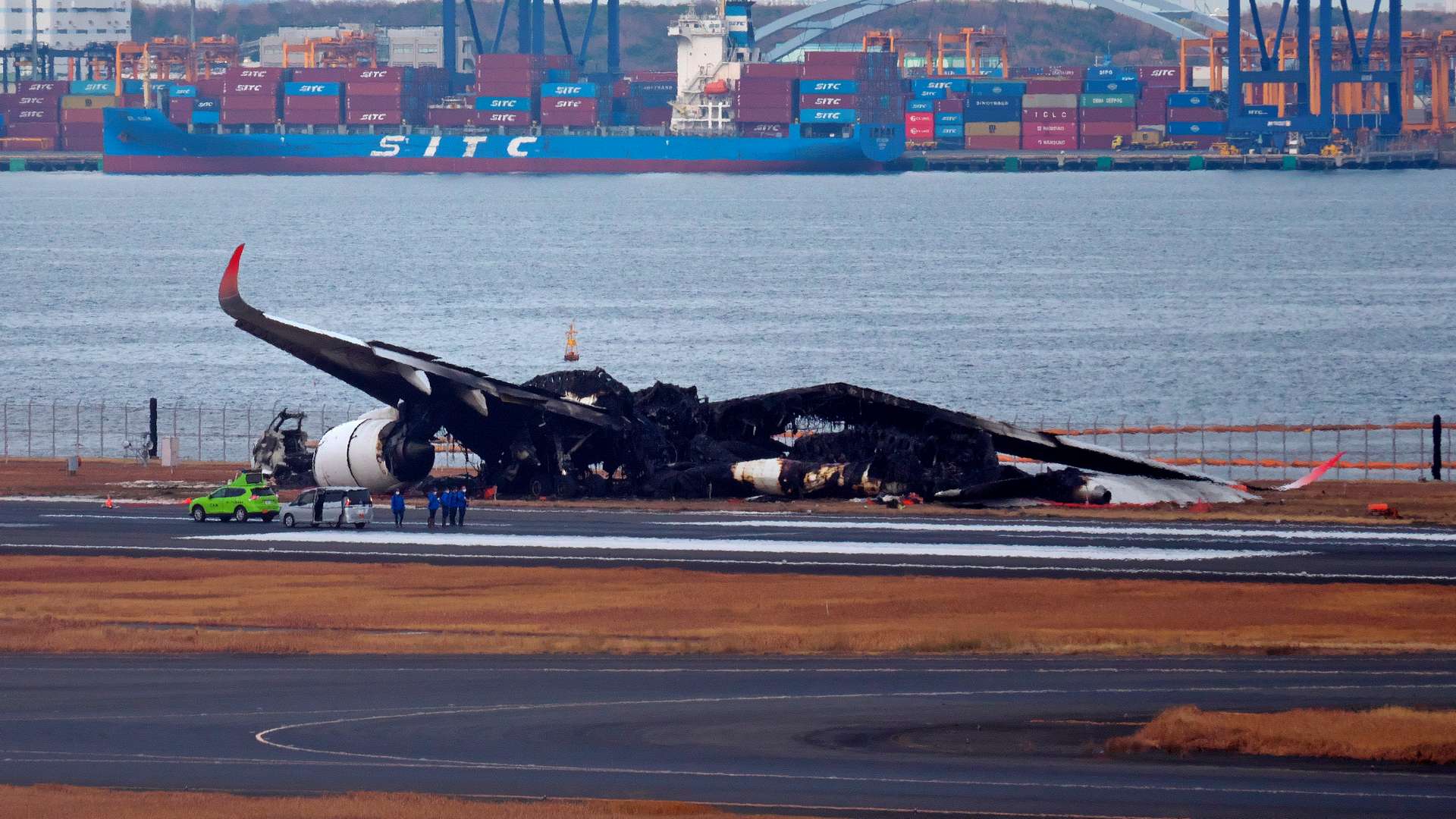
This is because it is possible that the Coast Guard crew understood their “No.1” status to mean that they could enter the runway. At this point, we don’t know if this is a permanent change, as the investigation continues.
The same authority also announced that they have now created another controller position in the tower. This is to monitor aircraft movements more closely, especially as they enter the runways. Tokyo Haneda had a system alerting controllers about aircraft entering the runway, but somehow the Coast Guard aircraft went unnoticed, for 40 seconds.
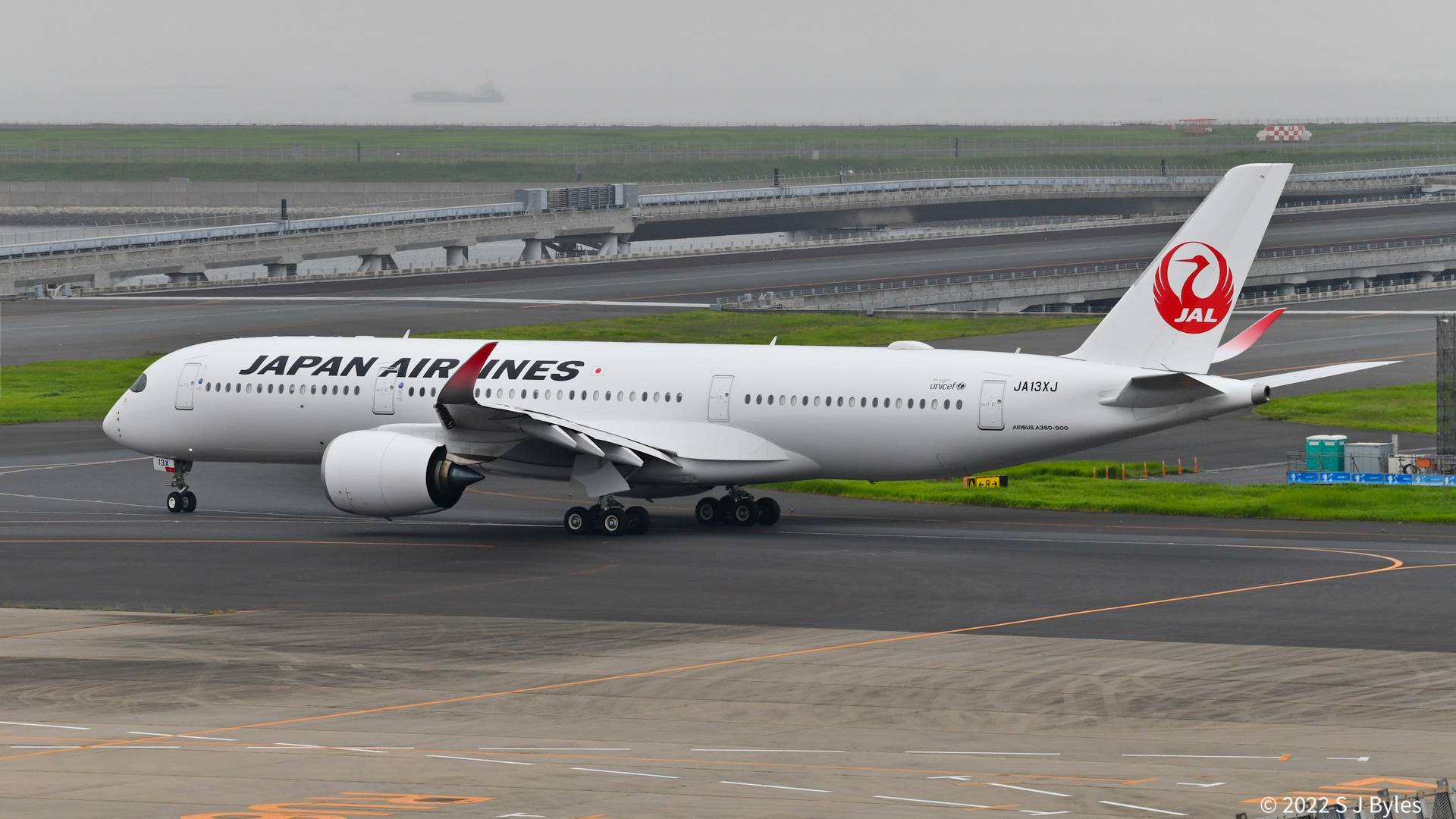
Tokyo JAL/Coast Guard Crash – More Lessons
Investigators are continuing to look at other key aspects of this Tokyo crash. One of these is the evacuation of the JAL Airbus A350, which was considerably slower than many first thought. Witnesses stated that it took about 7 minutes for most passengers to exit the airliner.
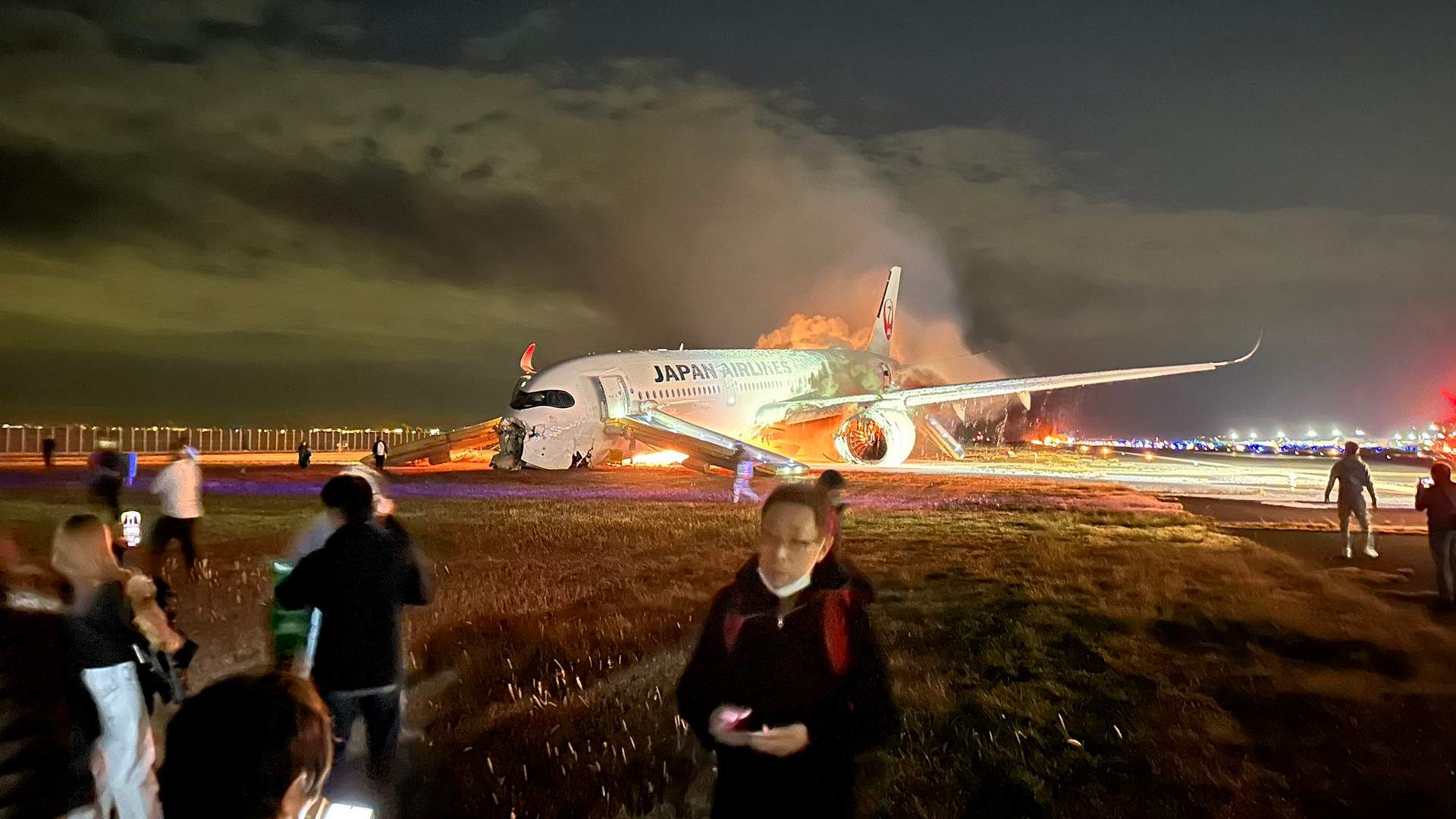
But in total, the evacuation of the A350 took even longer than that. The flight’s captain went through the cabin, to make sure that it was empty… and it wasn’t. The captain was the last to leave the aircraft, after getting everyone else off, another 11 minutes later. In total, the evacuation took 18 minutes.
The investigators recovered the cockpit voice recorder (CVR) and flight data recorder (FDR) of the Dash-8 relatively quickly. It took longer to recover the black boxes from the A350, particularly the CVR. But by the 6th of January, the investigators in Tokyo had all black boxes from this crash.
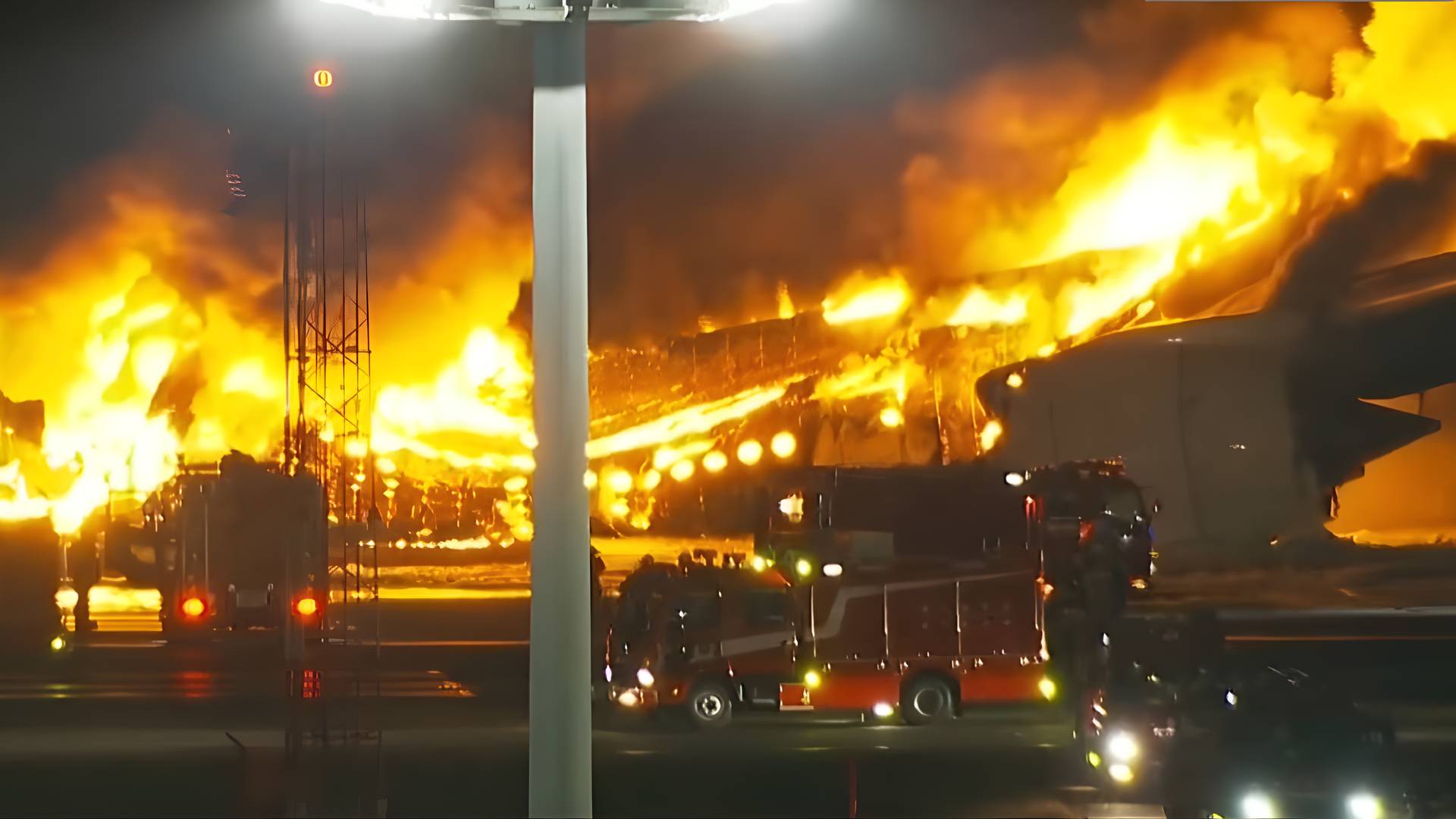
Finally, this crash is a landmark event, because it is the first hull loss of an airliner with a composite fuselage. The behavior of carbon fiber composites in a fire is something that some analysts believe could benefit from more study. Aircraft like the Sukhoi SuperJet have a composite floor, but the A350 and Boeing’s 787 make much more use of composites in their fuselages.
However, in this case, the A350 fuselage of the JAL aircraft in the Tokyo crash protected its occupants for a considerable amount of time – even if it eventually burned down completely. The main cause of this fire was the fuel in the tanks of the Coast Guard Dash-8.




14 comments
Iskender Kutlucinar
Sometimes crew have to make sure where the fire spreading before using any doors, in these conditions pilots didn’t see any fire or flames but flight attendants did. Must be big confusion between the pilots and the flight crew!
MICHAEL GREENBERG
Aviation operations are based on clearances with specific and defined Radio Telelephony phraseology.
” Number One” is definitely not a clearance. It is just an information given by ATC to create situational awareness.
The DASH 8 captain assumed, he can enter the runway !?
… assume, you make an ass out of you and me.”
As a routine procedure, the flight crew before entering the runway, always check the final approach, to verify, that no one is there. Obviously this was not done! You can’t miss an A 350 on short final with all its landing lights!
Jon Moore
Petter mentioned he didn’t know if the same Coastguard crew had been on all 3 flights of the Dash-8, this Reuters article suggests it was the first flight for the captain that day but he had been on 7-hour mission the day before.
https://www.reuters.com/world/asia-pacific/doomed-japan-plane-third-quake-mission-when-runway-disaster-hit-2024-01-04/
Jon Moore
Correction Spyros not Petter
KeeversDad
I comment as a 40+ year flight attendant/purser. Our emergency training requires us to wait for the captain to order the evacuation except in what we call a “no doubt, get out” situation such as this. Observing the early photos of the wreckage, it appears that fire may not have been visible to the forward crew or pilots. The pilots have an evac checklist to complete which includes shutting down the engines. The PA system had failed, probably due to fire burning through the wiring so the forward crew used megaphones to relay the information. However, the aft crew could clearly see the flames and smoke and initiated the evacuation. Keep in mind the cultural differences here. The Japanese wait for explicit instructions before moving and that they did. The 16 minutes is being misinterpreted because the last person to leave the burning aircraft was the captain and he left through the aft left exit, having ensured all of his passengers and crew were safe. I will watch with interest what the engineers feel about the composite fuselage contributing to keep fire out of the cabin for many minutes but it appears to have been a big help. My personal congratulations to this crew for a job well done. You have made all of us in the industry proud and thankful.
Joe Doran
One point I would question is the configuration on some A350. The rest room boxes leave narrowing exit room. In my estimation this needs to be looked at as it’s a congestion point. In an emergency and with confusion passengers delaying exit will create bottlenecks.
Mark
18 minutes seems an extreme amount of time for a fire evacuation. I would think there is room for improvement and possibly better procedures for a fire evacuation.
Dunton
Please see the comment from KeeversDad for professional and cultural explanations as to the reasons. Regulations already exist for launching evacuations in dire situations when no orders are received from the front end (or from the lead CA), however, as always this can be a difficult decision to make in cultures with a steep vertical hierachy. Anyone who has lived and worked in such cultures will understand. This is why the safe and complete evacuation in 18 minutes was b*@#&y marvellous and miraculous ! Credit to the professionalism of the cabin crew and the discipline of the (no bags) pax (another cultural factor which would have influenced the minority of foreigners).
V
To be honest, what else gonna Coast Guard pilot gonna say? He will say anything to excuse himself from causing aviation disaster – nobody wants to be only survivor and then spend rest of the life in prison. So naturally he’ll claim he had clearance to enter the runway. I don’t know in what language No.1 means clearance to enter runway, but should be in none.
Sunflower
Maybe we shouldn’t blame the composites for this event. I wonder how much crm was being used during the evacuation.
Alt Beel
Indeed there are videos showing the plane in full full stop position and the passengers restless in their seats, another report says some passengers were urging the crew to open the emergency doors. 6 minutes waiting while there is a visible fire and feeling the heat must be horrendous for the passengers.
Seems the decision for the crew to open the emergency doors took quite a while – I guess communication was a contributing factor – that might be a good point to evaluate if that could be improved.
TK Yang
18mins? So looks like the real hero here was the composite materials in the fuselage that slowed the fire.
[email protected]
The fact that the carbon fiber burned more slowly seems to be a good thing. It is still a shame that the 90 seconds was not achieved, but if carbon fiber can be proven to be more reliable consistently, than 90 seconds gives extra buffer time.
dezsoke
Why did it take longer to find the A350 recorders. Didn’t they stay in the plane itself? Surely people knew where in the plane they are located.
I read somewhere that it took 6 minutes before the evacuation was initiated. Yes, I know that
– the plane didn’t stop immediately
– that the cabin crew needs to check that each exit is safe to use
– that engines need to be stopped
Still 6 minutes seems excessive. What is the use of having a 90 seconds evacuation test if the evacuation is not started for 6 minutes?